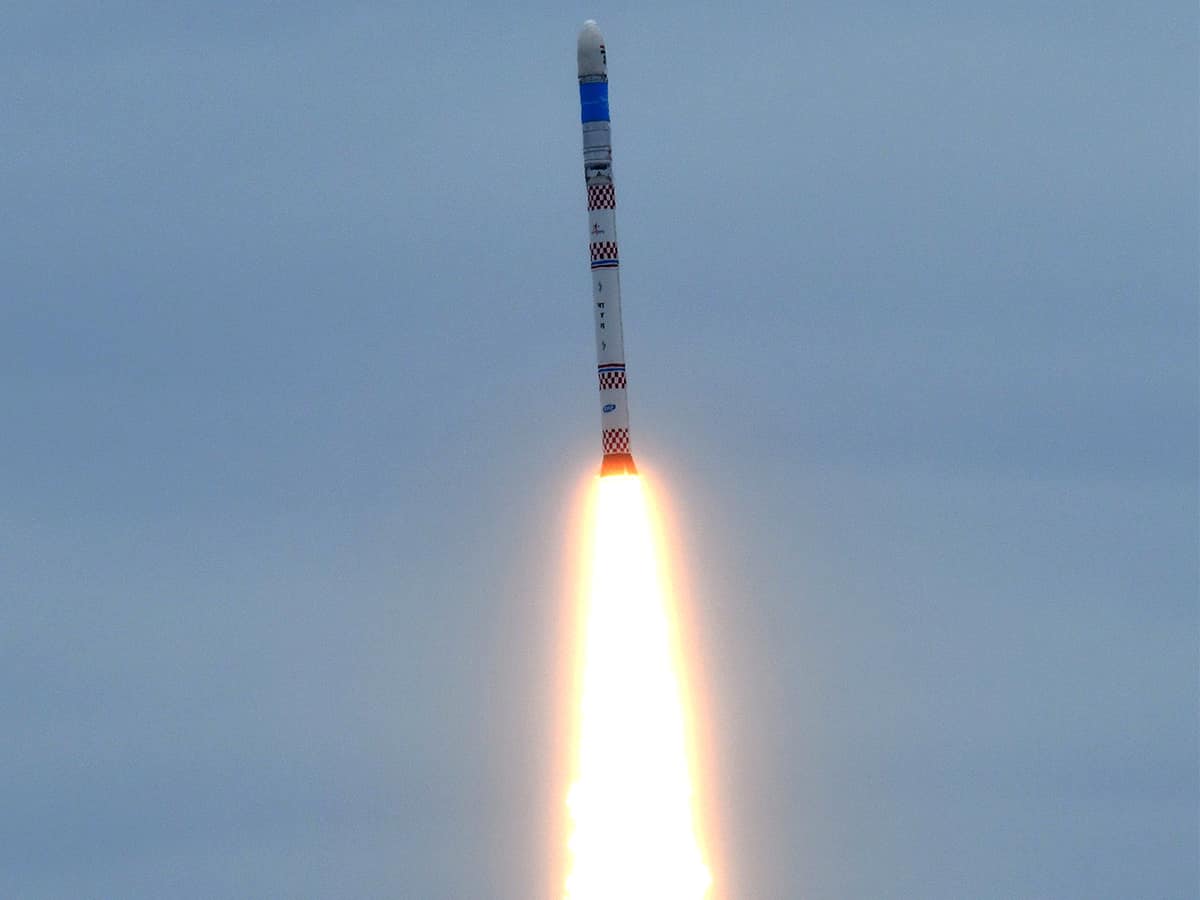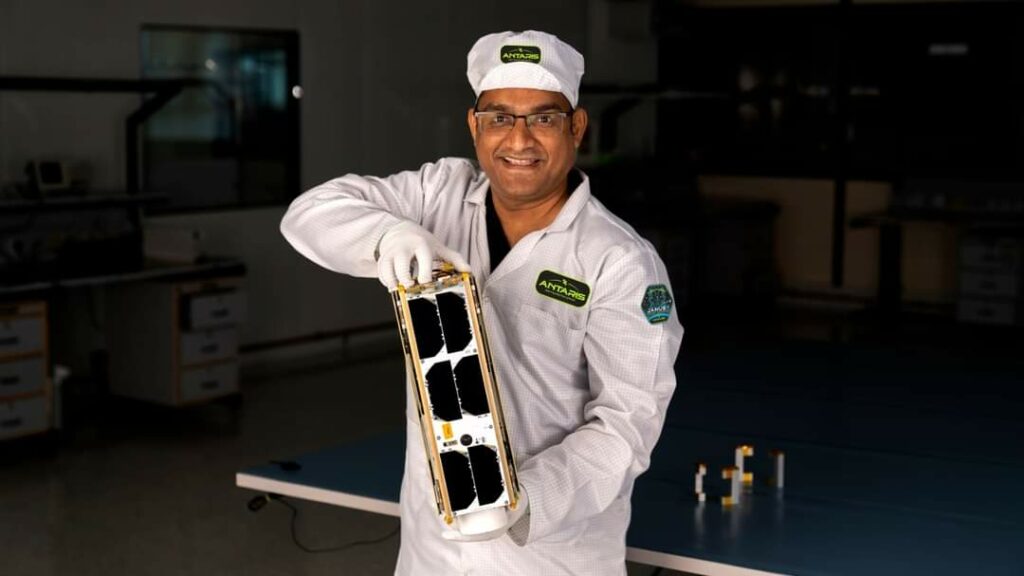
The February 10 mission of the ISRO to test its Small Satellite Launch Vehicle (SSLV) performance will have a special significance for both the space agency and two companies with active presence in Hyderabad—XDLINX and Ananth Technologies.
For the Indian Space Research Organisation (ISRO) it is important that the second demonstrator flight of the SSLV should succeed as the market for small satellites is growing huge and an exclusive launcher will give it a market advantage. Incidentally, the first flight on August 7, 2022 failed at the final stage in placing the payload in the right orbit.
The 34 metre tall, 2 metre diameter, 3-stage SSLV in its second attempt on Friday from the Satish Dhawan Spaceport in Sriharikota will carry three satellites to a circular orbit 450 km above Earth. According to the ISRO, the launcher will carry its own, Earth Observation Satellite (EOS)-07, weighing 156.3 kg; JANUS-1 (10.2 kg) belonging to US-based Antaris and AzaadiSAT2 (8.5 kg) of Space Kidz India, Chennai.
A successful mission will enable ISRO to demonstrate the readiness of the SSLV for commercial business. It will be a great relief for the PSLV (Polar Satellite Launch Vehicle), which has been taking on the role for a long time. PSLV can take on bigger missions for ISRO too.
Simultaneously, the developments in the Startup space have been encouraging in the small satellite market. Skyroot Aerospace, the Hyderabad-based company launched its Vikram-1 rocket in November and AgniKul Cosmos, Chennai has readied its Agnibaan rocket. While Vikram was a suborbital flight, Agnibaan will be a full orbit spaceflight.
The global market for small satellites was about $7.8 billion in 2019 and is projected to grow to about $25 billion in a decade. Given, the reputation of the PSV as an established player, providing low cost and competitive launch services, the ISRO will benefit enormously by establishing the SSLV as an exclusive offering in the near future. The NSIL, the commercial arm of the ISRO can offer the SSLV with advantages of lower operating cost, and quicker assembly and preparation time.
JANUS -1, Hardware made in India
The small satellite, called Janus-1, a 6U category among the cubesats (10X20X30cm) weighing just around 10-kg, making it the largest nano-satellite built in India was totally fabricated (the hardware part) in Hyderabad by XDLINX Labs and Ananth Technologies. ATLAS Space Operations provides the ground station services. Overall, about 8 entities across several countries are involved in the project.
The satellite is conceived as a technical demonstration to showcase the efficiency and cost-effectiveness of the Antaris platform and will feature five different payloads running on its SatOS™ satellite software once in orbit. The project was completed in just 10 months from concept to launch readiness with a cost savings of 75% over comparable satellite missions. Based on data captured during the build, Antaris, the Los Altos, California headquartered, software platform provider for space anticipates that future spacecraft missions can be ready for launch in as few as six months. Janus-1 is the brainchild of Karthik Govindasamy (CEO, Antaris) and Rupesh Gandupalli (CEO, XDLINX).

Rupesh, the CEO of XDLINX started from scratch, building the team and the facilities to realise the project is done quickly. Janus-1 as a “technology demonstrator”, has at least 5-payloads, the experiments which are intended to be carried out in space, says Syed Maqbool, a former ISRO scientist and now with the company.
The Chairman and Managing Director of Ananth Technologies (a long term industry partner of the ISRO), Dr Subba Rao Pavuluri said in a recent statement, “We support Antaris mission of driving collaboration across the space economy and see tremendous potential in this new approach to satellite design and operations. The build process for JANUS-1 was highly efficient even for a complex design with multiple payload providers from around the world.”
The SSLV launch will also place the Earth Observation Satellite (EOS-7), which is an imaging, observation and reconnaissance satellite built and operated by the ISRO and the AzaadiSAT 2 — a student satellite built by 750 girl students, and supported by Space Kidz India.
The Friday launch scheduled for 9:18 AM and expected to last for 15 minutes is significant for India’s commercial space operations. It should overcome the failure of the first launch mission of August 2022 when the satellites on board SSLVD1 were placed in a highly elliptical orbit but with a shortfall in velocity and orbits decaying the satellites were rendered unusable. This happened after all the three stages worked smoothly.
